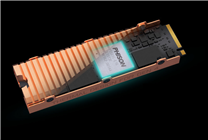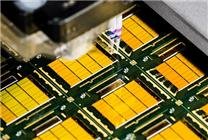The Future of PCIe and Memory Technology: Expectations for 2029
Summary:
- PCIe 7.0 and advances in flash memory set to revolutionize SSDs by 2029.
- SK Hynix unveils an ambitious roadmap for memory technologies, including HBM5 and GDDR7.
- Increased flash layer counts will significantly enhance performance and capacity.
As the landscape of technology rapidly evolves, the advancements in PCIe specifications and memory technologies are crucial for the future of data storage. The development of PCIe 7.0 marks a significant milestone, promising to bring unprecedented performance levels to SSDs by 2029.
PCIe 7.0: A Game-Changer for SSDs
Currently in draft form, PCIe 8.0 will follow the confirmed PCIe 7.0, which is set to debut alongside groundbreaking SSD technology due in 2029. The implications for data transfer speeds are profound, with PCIe 7.0 expected to support speeds exceeding 128GB/s for PB-level SSDs. This performance leap is anticipated to surpass the current capabilities of DDR5-6400 memory bandwidth, guaranteeing a more efficient and responsive tech ecosystem.
SK Hynix’s Roadmap to Innovation
At a recent conference, SK Hynix laid out a comprehensive roadmap for memory chip advancements from 2026 to 2031. This ambitious plan includes various types of memory, namely HBM, DDR, LPDDR, and NAND flash technologies.
-
HBM Developments: The launch of HBM5 and HBM5e is projected for 2029, featuring customized versions tailored to specific applications. These developments are not just trends; they represent a broader consensus across the industry, indicating a pivot towards more specialized memory solutions.
- GDDR7 and DDR6: The next generation of GDDR7 products and DDR6 memory are also on the horizon. Additionally, innovations in 3D RAM will become increasingly prominent, offering enhanced performance capabilities for future devices.
Flash Memory Evolution
The exponential growth of flash memory layers will play a critical role in this technological evolution. Current mass production techniques yield SSDs with around 200 layers, while advancements are pushing manufacturers towards 300+ layers within the next two years.
-
400+ Layers: By 2029, we can expect SSDs with over 400 layers of flash memory. This increase not only signifies greater storage capacity but also improved read and write speeds, crucial for high-demand applications.
- Enterprise vs. Consumer SSDs: SK Hynix also distinguishes between eSSD (enterprise) and cSSD (consumer) segments, noting that while the development of enterprise SSDs will be prioritized, consumer-grade SSDs may arrive later in 2031.
Performance and Capacity Enhancements
The integration of PCIe 7.0 technology with the anticipated 400+ layer flash memory will elevate SSD performance to new heights. For instance, SSD configurations offering over 1000TB of storage capacity will experience dramatic enhancements in performance, with one-way speeds of 64GB/s becoming common. This could redefine data-heavy applications, providing users with faster data retrieval and processing capabilities, crucial for sectors that rely heavily on rapid data access.
Conclusion
The trajectory of PCIe technology and memory advancements promises to redefine the landscape of data storage solutions. With PCIe 7.0 on the horizon and innovative breakthroughs in flash memory, the industry is poised for a significant transformation. As we approach 2029, users and enterprises will experience improvements that not only enhance performance but also facilitate the growth of applications reliant on high-capacity, high-speed storage solutions.
Emphasizing optimization and scalability, the future of memory and PCIe technology is bright, ushering in an era that will undoubtedly shape how we interact with digital information in the years to come.







